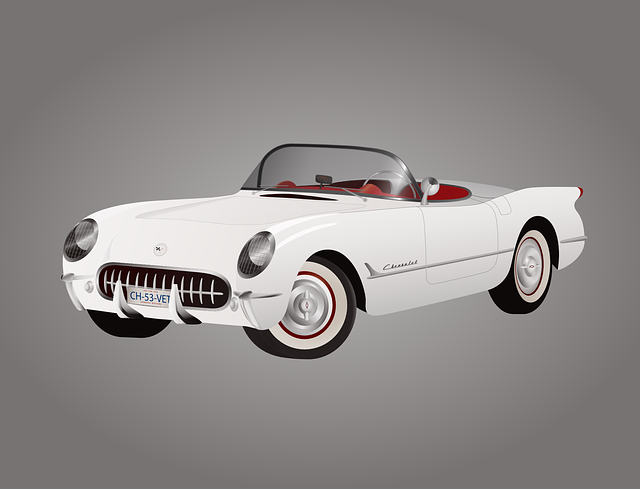Before shopping for car insurance, assess personal factors (driving history, vehicle type, budget) and required coverage types (liability, collision, comprehensive). Research providers, compare quotes, and consider customer reviews. Decode policy language, understand key terms, and review limits, deductibles, and exclusions. Balance cost and comprehensive coverage, regularly update your policy as needs change, and stay informed about market offerings to make the best choice for your vehicle.
Comparing car insurance policies is a crucial step in ensuring you have the right coverage for your unique needs. This guide will help you navigate the process by first understanding your requirements and the various policy types available. We’ll break down complex language, offer tips on comparison shopping, and emphasize the importance of balancing cost and coverage. Additionally, we’ll provide insights into reviewing exclusions and staying informed about policy updates, empowering you to choose the best car insurance policy.
Understanding Your Needs: Factors to Consider Before Shopping for Car Insurance

Before shopping for car insurance, understanding your needs is crucial. This involves evaluating several personal and situational factors that will influence your coverage requirements. Consider aspects like your driving history and experience, vehicle type and age, as well as your budget for premiums. Additionally, assess the level of risk you’re comfortable with and the specific types of protection you need, such as liability, collision, comprehensive, or additional perks like roadside assistance.
Knowing what to look for in a car insurance policy will help you make informed decisions when comparing different options. Researching various providers, reading policy details carefully, and considering customer reviews can ensure you choose the best coverage that aligns with your needs and offers adequate protection at a price that fits within your budget.
Types of Car Insurance Policies: Exploring Liability, Collision, and Comprehensive Coverage

When shopping for car insurance, understanding the different policy types is crucial to choosing the best fit for your needs. The three primary coverage options are liability, collision, and comprehensive. Liability insurance protects you against claims made by others in case of an accident where you’re at fault, covering damages to their vehicle or property. Collision coverage, on the other hand, applies when you’re involved in a crash with another vehicle or object, paying for repairs to your own car. Comprehensive insurance offers broader protection, covering not just collision but also damage from theft, vandalism, natural disasters, and more, giving peace of mind and ensuring your vehicle is repaired or replaced.
Knowing these options allows you to make an informed decision when How to Choose the Best Car Insurance Policy. Compare premiums, deductibles, coverage limits, and exclusions to find a balance between cost and protection. For instance, if your vehicle is older and its replacement value is low, comprehensive and collision coverage might be less necessary. However, for newer or pricier cars, these additional protections could be invaluable.
Decoding Policy Language: Key Terms and Clauses Every Driver Should Know

Understanding your car insurance policy is essential for making informed decisions about how to choose the best car insurance policy. When comparing different policies, it’s crucial to decode the language used in each. This involves familiarizing yourself with key terms and clauses that shape the coverage and exclusions. Common terms like “liability,” “comprehensive,” and “deductible” carry specific meanings; knowing them ensures you grasp what’s covered and what isn’t.
Paying attention to policy details, such as limits of liability, coverage options, and any special conditions, empowers drivers to identify policies that align with their needs. By understanding the fine print, individuals can avoid surprises when filing claims or realizing limitations in their coverage. This knowledge is critical for making an informed choice when selecting a car insurance policy, ultimately leading to better protection on the road.
Comparison Shopping: How to Evaluate Different Car Insurance Quotes Effectively

When comparing car insurance policies, one of the most effective strategies is comparison shopping. Start by gathering quotes from multiple insurers using online tools or contacting agents directly. Don’t limit your search to just a couple of companies; aim for at least five to ten quotes to have a comprehensive view of the market. This allows you to see how much coverage you can get for your budget, as prices can vary significantly even for similar policies.
To evaluate these quotes effectively, consider not only the price but also the scope and types of coverage offered. Review the details carefully: liability limits, collision deductibles, comprehensive coverage options, and any additional perks or discounts. Remember that the cheapest option might not provide adequate protection. How to Choose the Best Car Insurance Policy involves striking a balance between cost and comprehensive coverage tailored to your needs, ensuring you’re protected without overspending.
Balancing Cost and Coverage: Finding the Right Balance for Your Budget and Peace of Mind

When comparing car insurance policies, one of the most crucial considerations is balancing cost and coverage. It’s essential to understand that a policy with higher premiums doesn’t always translate to better protection; likewise, a cheaper option may not cover all your needs. The goal is to find an insurance plan that strikes the right balance between affordability for your budget and providing peace of mind knowing you’re adequately covered in case of accidents or damage.
To achieve this, carefully evaluate your financial situation and assess the potential risks you face as a driver. Consider factors like your driving history, the make and model of your vehicle, and the coverage limits offered by different policies. Comparisons between quotes from various insurers will help identify the best value for money without compromising on essential protections. Remember, the right car insurance policy should offer both financial security and peace of mind, ensuring you’re protected without breaking the bank.
Reviewing Exclusions and Limits: Ensuring Your Policy Meets Your Unique Requirements

When comparing car insurance policies, it’s crucial to review exclusions and limits. Every policy has specific things it doesn’t cover, and understanding these is key to choosing the best one for your needs. Exclusions might include certain types of vehicles, pre-existing damage, or specific events like natural disasters. You want to ensure that your policy doesn’t leave you exposed in situations where you’d face unexpected costs.
Limits refer to the maximum amount your insurance will pay out in case of a claim. It’s essential to consider both the liability limits (for damages you may cause to others) and the coverage limits for other types of losses, like collision or comprehensive. By understanding these aspects thoroughly, you can make an informed decision on how much protection you need, balancing cost with peace of mind.
Staying Informed: Tips for Regularly Updating and Revising Your Car Insurance Policy

Staying informed is key when it comes to choosing the best car insurance policy that suits your needs. Regularly updating and revising your coverage is essential, as circumstances change over time. For instance, if you upgrade your vehicle or add new drivers to your policy, ensure these changes are reflected in your insurance plan. Keep an eye on your policy documents to track any updates and stay aware of potential gaps in coverage.
A good practice is to set aside some time each year to review your policy. Compare your current coverage with market offerings, as rates and terms can vary significantly. This proactive approach ensures you make informed decisions when renewing or switching policies, ultimately saving you money and providing the right level of protection for your vehicle.
